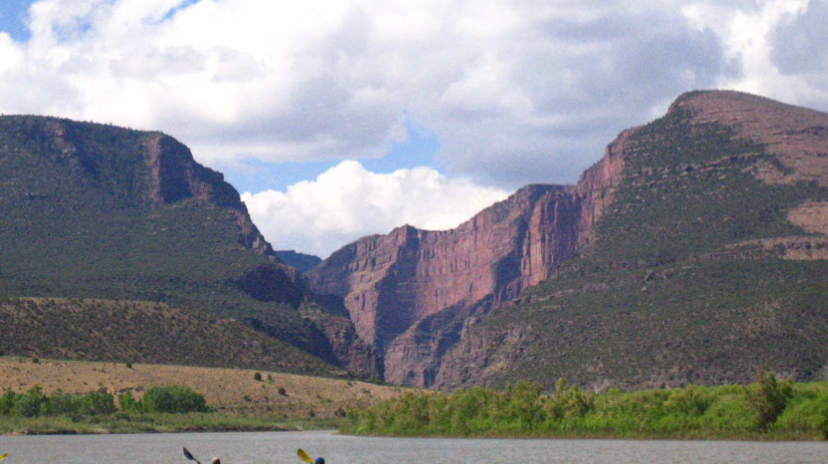
Photographer: Tristan Leong
Floating through Lower Brown’s Park, the river made an abrupt right turn, changing its direction from east to south. The change in direction was no surprise, rivers meander back and forth all the time. What was surprising was the view as the river turned south. The river had been flowing through a valley of soft alluvium then suddenly entered through the Gates of Lodore. Rising up to its name, the canyon gates look as though they shot up through the ground. A close look at the geology of the area would suggest otherwise.
Stratigraphy dating back to the Precambrian (2500-570 million years ago) was compressed by tectonic stresses forming a large anticline. Brown’s Park now rests near the top of this anticline, though it has been eroded down thousands of feet. The top of the anticline was eroded because 1) units higher in elevation are eroded more easily because of exposure to precipitation, wind, etc. and 2) the top of an anticline is stressed the most by bending making the rock weaker and more easily erodable. After the top of the anticline was eroded down to and partly into its resistant quartzite core of the Uinta Mountain Group, younger units were deposited.
As the Brown’s Park formation grew thicker and thicker, the valley was soon overtopped with sediments. Topography in the east was also rising so the Green River finally turned to the south in late Tertiary time (5 million years ago) finding it’s new, current path. In Lower Brown’s Park one can still see the high terraces on either side of the river and continuing east through the valley. These terraces mark the elevation of the river and its valley 5 million years ago. Since then the river has cut through the Brown’s Park formation and further into the quartzite of the Uinta Mountain Group.
At the time the river turned south, Lodore Canyon had yet to be carved. Once the river found its new path, erosion of the quartzite carved out a beautiful, narrow red canyon. Because the sediments filling Brown’s Park Valley are less resistant than quartzite, these sediments were eroded and transported down through the river at a faster rate than the Uinta Mountain Group. The result of this process is the Gates of Lodore looming above and terminating Brown’s Park Valley.
